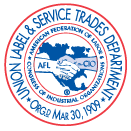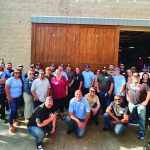By Rep. Steny H. Hoyer, House Democratic Whip
The American economy grew significantly after the Second World War and brought wide-ranging opportunity to our workers and their families. At the center of it all was a strong manufacturing sector that built the products that made our world run, and it was American workers who produced them and earned a decent living while doing so. After a painful manufacturing decline in recent years, our manufacturing sector is back, driven by innovation and advanced technologies, and it carries the potential for a significant increase in high-skill, high-wage jobs for a new generation of American workers.
Traditionally, manufacturing jobs have opened doors of opportunity that help workers and their families secure a place in America’s middle class. They are the jobs that make the American Dream a reality– jobs that come with pay and benefits that support affordable, quality health care, homeownership, access to higher education, and savings for a comfortable retirement. But as those jobs declined, it became harder for working families to access these opportunities and rise up into the middle class.
We need a new manufacturing renaissance, and the best way to achieve it is by investing in the tools proven to help innovators and entrepreneurs launch and expand businesses that make cutting-edge products in America once again. Over the past four years, 646,000 manufacturing jobs have been created as more and more businesses realize the benefits to locating their facilities here and hiring skilled U.S. workers. But that must be only the beginning.
Over the past four years, I’ve been proud to lead an effort in Congress that can build on recent gains and help America compete for the manufacturing jobs of the twenty-first century. That effort is called Make It In America, an ambitious jobs and competitiveness plan that focuses on investments in education, innovation, and improvements to infrastructure. It has bipartisan support and was crafted based on input from AFL-CIO and labor organizations as well as economists, business leaders, and educators. I’m encouraged that the Senate has also introduced its own manufacturing plan, which complements Make It In America.
There have now been over seventy Make It In America bills introduced in the 113th Congress in four core areas: pursuing a national manufacturing strategy, promoting U.S. exports, encouraging the return of jobs and innovation from overseas, and securing a twenty-first century workforce.
As any organizer can attest, the first step in any major undertaking is to have a plan. That’s why adopting a national strategy to grow our manufacturing base is so important. Our businesses and workers will better be able to Make It In America if we have a clearer understanding of both our economic challenges and the tools at our disposal to surmount them.
Make It In America bills also focus attention on how to make it easier for our businesses to sell their products not only around the country but across the world. Since President Obama took office, exports have risen steadily, helping to fuel economic growth and job creation. But if we are to meet the goal he set of eventually doubling our exports, Congress will need to pass laws that improve the efficiency of our freight infrastructure and provide additional resources to help small businesses identify and access new markets. Part of this effort must include robust enforcement of trade rules that ensure American workers can compete on a level playing field with foreign competitors.
At the same time, Congress has an opportunity to encourage more businesses to locate their production and innovation here in our country as well as to bring back jobs that had previously been outsourced. We can do it by reforming our tax code so that we are no longer rewarding companies that ship jobs overseas. Instead, we ought to provide incentives for businesses to bring jobs and innovation back and keep them here. Make It In America bills like the R&D Tax Credit Extension Act, the Patriot Corporations of America Act, and the Bring Jobs Home Act would make sure that creating jobs in America is not only the right thing to do but also a smart business move.
Finally, we cannot attract the twenty-first century jobs we need without investing in a twenty-first century workforce. Make It In America places a heavy focus on strengthening our education system, particularly in the areas of science, technology, engineering, and math – or “STEM.” Producing skilled graduates in these fields is critical to maintaining the innovation edge America has over its global competitors. Our plan includes bills that would create and strengthen partnerships between community colleges and manufacturers to establish career pipelines as well as an expansion of job training programs that teach in-demand skills. American workers are still the most productive in the world, and with Make It In America we can keep it that way.
We have the potential to revitalize our manufacturing sector and help connect more of our workers with good jobs that can support families in the middle class. But that’s only if Congress gets the chance to vote Make It In America bills.
Republicans’ obstruction of jobs and competitiveness legislation comes at a time when their party has also focused its efforts on rolling back crucial workers’ rights. It is telling that while House Democrats have been focused on creating jobs and opportunity to help our workers Make It In America, House Republicans have been working to limit workers’ ability to organize in unions and bargain collectively for better wages and benefits. America’s workers ought to stand up and demand that the Speaker and Majority Leader abandon their drive to erode workers’ rights and protections and instead bring Make It In America bills to the House Floor for consideration.
If Congress can take action this year to invest in building a strong manufacturing base for the twenty-first century, we can lay the groundwork for a new generation of economic prosperity and middle-class growth. We cannot afford to fail in this effort – other nations are already taking steps to help their workers compete for the jobs we ought to be creating here in our country. The stakes are high, and America’s workers are ready to Make It In America. It’s time for Congress to step up and do its job to make sure our workers can do theirs.







